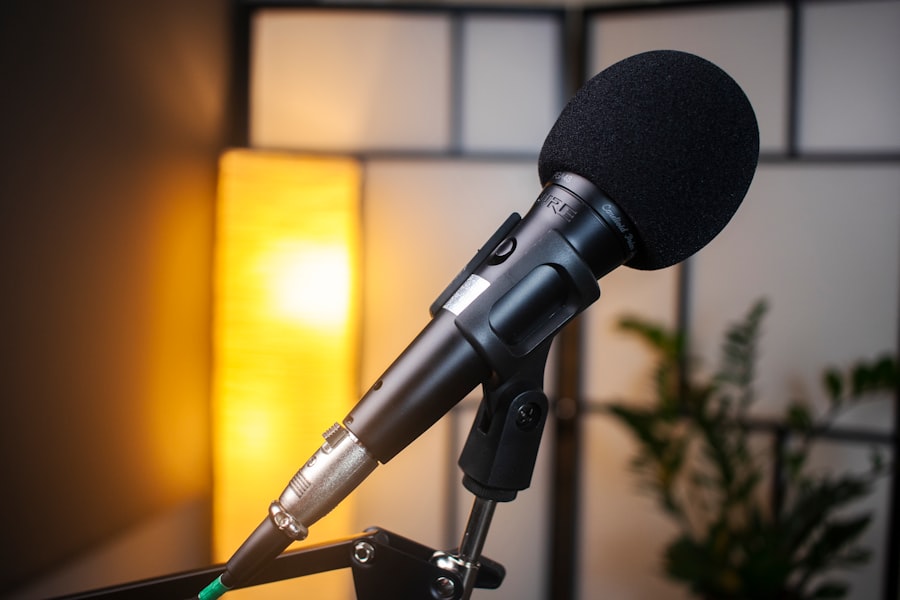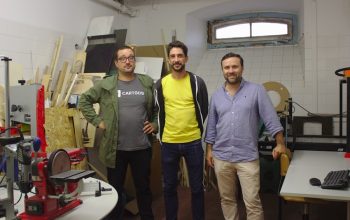Podcasting has emerged as a formidable force in the media landscape over the past two decades, evolving from a niche hobby into a mainstream medium. The term “podcast” itself, a portmanteau of “iPod” and “broadcast,” was coined in the early 2000s, but it wasn’t until the advent of smartphones and streaming services that the format truly began to flourish. The introduction of Apple’s podcast directory in 2005 played a pivotal role in popularizing the medium, making it easier for users to discover and subscribe to shows.
As technology advanced, so did the accessibility of podcasting; anyone with a microphone and an internet connection could create and distribute content, democratizing the audio landscape. The rise of podcasting can also be attributed to changing consumer habits. As people increasingly sought on-demand content that fit into their busy lifestyles, podcasts provided a convenient solution.
Listeners could tune in while commuting, exercising, or performing household chores, allowing them to consume information and entertainment without being tethered to a screen. This flexibility has contributed to the rapid growth of the medium, with millions of podcasts available across various platforms, catering to an array of interests and demographics. The combination of accessibility, convenience, and a diverse range of content has solidified podcasting’s place in modern media consumption.
Key Takeaways
- Podcasting has seen a significant rise in popularity, with more and more people tuning in to listen to their favorite shows and content.
- Traditional media outlets have been impacted by the rise of podcasting, with many adapting their content to include podcasting as part of their offerings.
- Podcasting content is incredibly diverse, covering a wide range of topics and interests, catering to a broad audience.
- The audience for podcasting is growing, with more people turning to podcasts for entertainment, education, and information.
- Podcasting has had a significant influence on marketing and advertising, with many companies utilizing podcasts as a platform to reach their target audience in a more personal and engaging way.
The Impact of Podcasting on Traditional Media
The rise of podcasting has had profound implications for traditional media outlets, particularly radio and television. As audiences gravitate towards on-demand audio content, traditional broadcasters have been compelled to adapt their strategies. Many radio stations have launched their own podcasts to capture the attention of younger listeners who prefer the flexibility that podcasts offer over scheduled programming.
This shift has led to a blending of formats, with radio shows often being repackaged as podcasts, allowing for greater reach and engagement. Moreover, podcasting has introduced new storytelling techniques that challenge conventional media narratives. The serialized nature of many podcasts allows for deep dives into topics that traditional media may only cover superficially.
For instance, investigative journalism podcasts like “Serial” have captivated audiences by presenting complex stories over multiple episodes, fostering a sense of suspense and engagement that is often absent in traditional news formats. This shift not only enhances storytelling but also encourages traditional media to rethink how they present information, leading to more innovative approaches in news reporting and entertainment.
The Diversity of Podcasting Content

One of the most remarkable aspects of podcasting is its vast diversity in content. From true crime and politics to comedy and personal development, there is a podcast for virtually every interest imaginable. This diversity is not merely a reflection of audience preferences; it also represents a broader cultural shift towards inclusivity and representation.
Independent creators have found their voices in this medium, allowing marginalized communities to share their stories and perspectives that may have been overlooked by mainstream media. For example, podcasts like “Code Switch” from NPR tackle issues of race and identity in America, providing a platform for discussions that are often sidelined in traditional media narratives. Similarly, shows like “The Read” offer commentary on pop culture from the perspective of Black hosts, creating a space for conversations that resonate with their audience.
This rich tapestry of content not only enriches the listening experience but also fosters community among listeners who share similar interests or backgrounds. The ability for anyone to create and distribute content has led to an explosion of voices that reflect the complexities of modern society.
The Growing Audience of Podcasting
| Year | Number of Podcast Listeners (in millions) |
|---|---|
| 2017 | 73 |
| 2018 | 76 |
| 2019 | 88 |
| 2020 | 104 |
| 2021 | 116 |
The audience for podcasts has seen exponential growth over recent years, with millions tuning in regularly. According to statistics from Edison Research, as of 2023, over 80 million Americans listen to podcasts weekly, a figure that continues to rise as more people discover the medium. This growth is particularly pronounced among younger demographics; millennials and Gen Z listeners are increasingly turning to podcasts as their primary source of information and entertainment.
This shift is indicative of broader trends in media consumption, where traditional forms like television are losing ground to more flexible and engaging formats. The increasing popularity of podcasts can also be attributed to the rise of social media and digital marketing strategies that promote audio content. Platforms like Instagram and TikTok have become essential tools for podcasters to reach new audiences through snippets and highlights from their episodes.
Additionally, collaborations between podcasters and influencers have further expanded their reach, allowing them to tap into established fan bases. As more people become aware of the medium’s potential, the audience is expected to continue growing, leading to even greater opportunities for creators and advertisers alike.
The Influence of Podcasting on Marketing and Advertising
Podcasting has transformed the landscape of marketing and advertising by offering brands unique opportunities to connect with consumers in an intimate setting. Unlike traditional advertising methods that often interrupt content consumption, podcast ads are typically woven seamlessly into the narrative, making them less intrusive and more engaging. This format allows brands to build trust with listeners by associating themselves with content that resonates with their target audience.
Moreover, the effectiveness of podcast advertising is underscored by research indicating that listeners are more likely to remember and act on ads they hear in podcasts compared to other media forms. According to a study by Nielsen, 61% of podcast listeners reported being more likely to purchase a product after hearing about it on a podcast. This high level of engagement has led many companies to allocate significant portions of their marketing budgets towards podcast advertising, recognizing its potential for driving brand awareness and customer loyalty.
The Future of Podcasting Technology

As podcasting continues to evolve, advancements in technology are poised to shape its future significantly. One notable trend is the integration of artificial intelligence (AI) into podcast production and distribution processes. AI tools can assist creators in editing audio files, generating transcripts, and even suggesting topics based on listener preferences.
This technology not only streamlines production but also enhances accessibility for audiences who may prefer or require written content alongside audio. Additionally, innovations in audio quality are set to improve the overall listening experience. With advancements in sound engineering and recording technology, podcasters can produce high-fidelity audio that rivals traditional broadcasting standards.
Furthermore, developments in interactive audio experiences are emerging, allowing listeners to engage with content in new ways—such as choosing different story paths or accessing supplementary materials through mobile apps. These technological advancements will likely attract new audiences while retaining existing listeners who seek richer experiences.
The Challenges and Opportunities for Podcasting
Despite its rapid growth and popularity, podcasting faces several challenges that creators must navigate. One significant hurdle is market saturation; with millions of podcasts available, standing out in a crowded field can be daunting for new creators. As more individuals enter the space, it becomes increasingly important for podcasters to develop unique concepts and high-quality content that resonates with their target audience.
However, this challenge also presents opportunities for innovation. Creators can explore niche topics or underserved demographics that may not yet have a strong presence in the podcasting world. By focusing on specific interests or communities, podcasters can cultivate dedicated listener bases that appreciate their unique perspectives.
Additionally, collaboration among creators can foster cross-promotion and shared audiences, helping both parties grow their reach while enriching the overall podcasting ecosystem.
The Importance of Quality in Podcasting
In an era where content is abundant but attention spans are limited, quality has become paramount in podcasting. Listeners are increasingly discerning about what they choose to invest their time in; therefore, podcasters must prioritize high production values, engaging storytelling techniques, and well-researched content. A polished audio experience—free from distracting background noise or technical glitches—can significantly enhance listener retention and satisfaction.
Moreover, authenticity plays a crucial role in establishing credibility with audiences. Listeners are drawn to hosts who convey genuine passion for their topics and foster relatable connections through their narratives. This authenticity not only builds trust but also encourages listener loyalty; audiences are more likely to return for future episodes if they feel a personal connection with the host or subject matter.
As the podcasting landscape continues to evolve, maintaining high standards for quality will be essential for creators aiming to thrive in this dynamic medium.
If you’re interested in learning more about the potential impact of podcasting on education, check out the article network/blog/2024/10/31/hello-world/’>”Hello World” on the Education Podcast Network website.
This article explores how podcasting can revolutionize the way students learn and engage with educational content. It offers insights into the future of podcasting in the classroom and how it can enhance the learning experience for students of all ages.
FAQs
What is podcasting?
Podcasting is a digital medium that consists of episodic series of spoken word, audio, or video files that a user can download and listen to.
What is the future of podcasting?
The future of podcasting looks promising, with continued growth in listenership and an increasing number of creators entering the space. Advancements in technology and the growing popularity of on-demand audio content are contributing to the expansion of podcasting.
How is podcasting evolving?
Podcasting is evolving in various ways, including the development of new content formats, improved distribution channels, and the integration of interactive and immersive elements. Additionally, there is a growing focus on monetization and the creation of diverse and inclusive content.
What are the key trends shaping the future of podcasting?
Key trends shaping the future of podcasting include the rise of personalized and niche content, the integration of voice assistant technology, the expansion of audio storytelling, and the increasing investment from both traditional media companies and tech giants.
What are the challenges facing the future of podcasting?
Challenges facing the future of podcasting include issues related to discoverability, monetization, content saturation, and the need for industry standards and regulations. Additionally, there are ongoing discussions about diversity, equity, and inclusion within the podcasting space.



